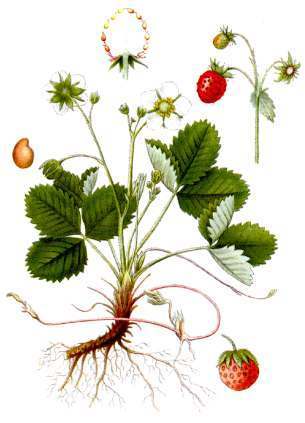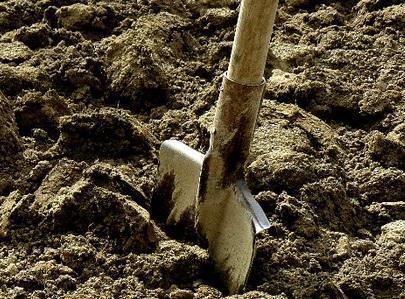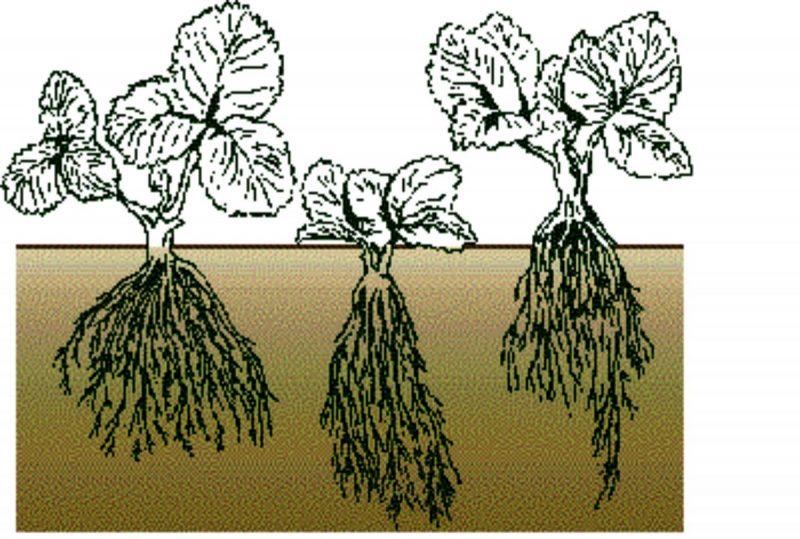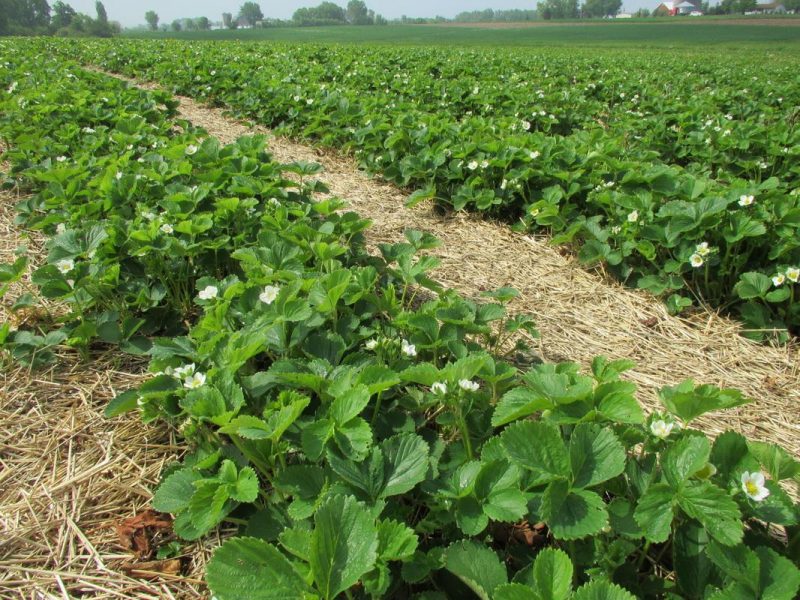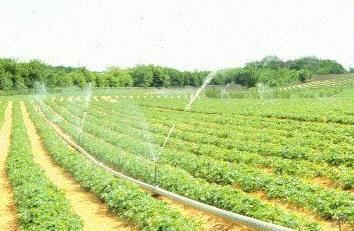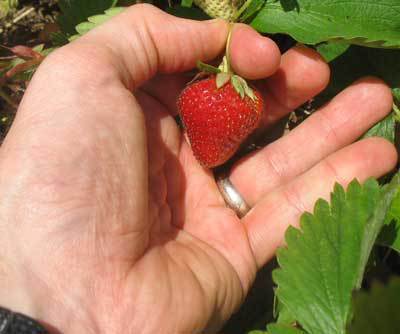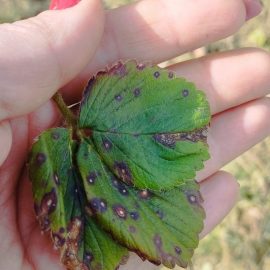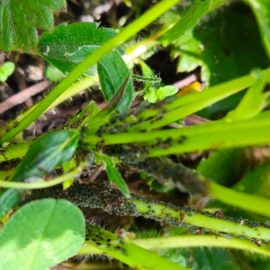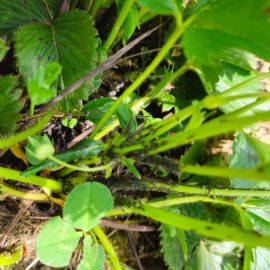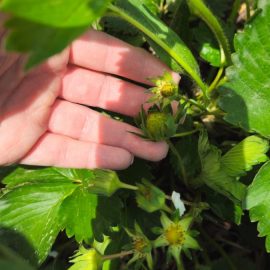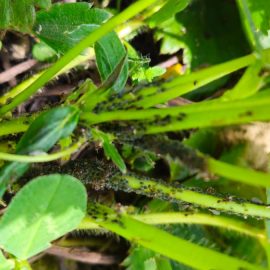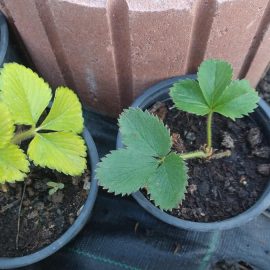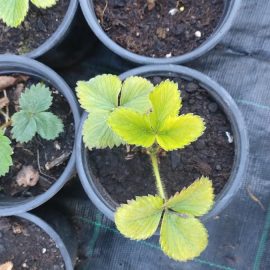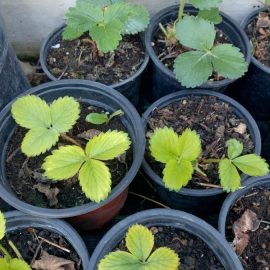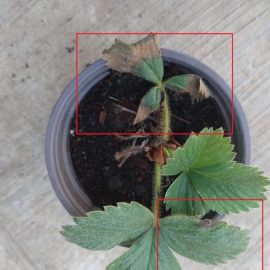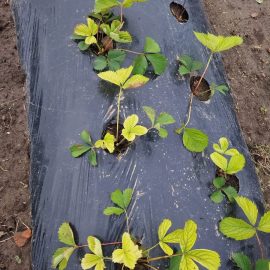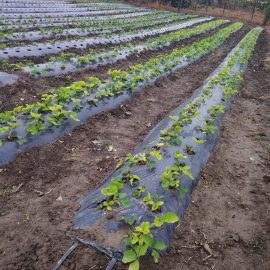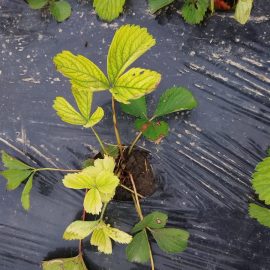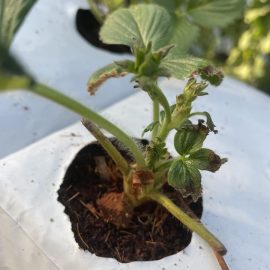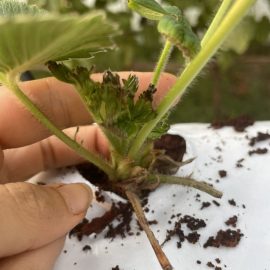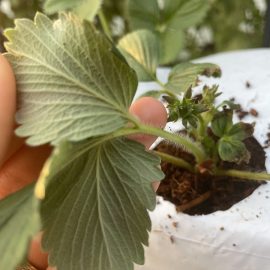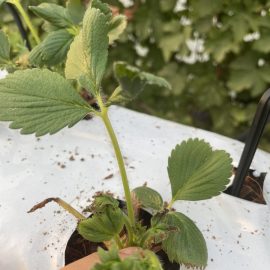Strawberry, planting, growing and harvesting
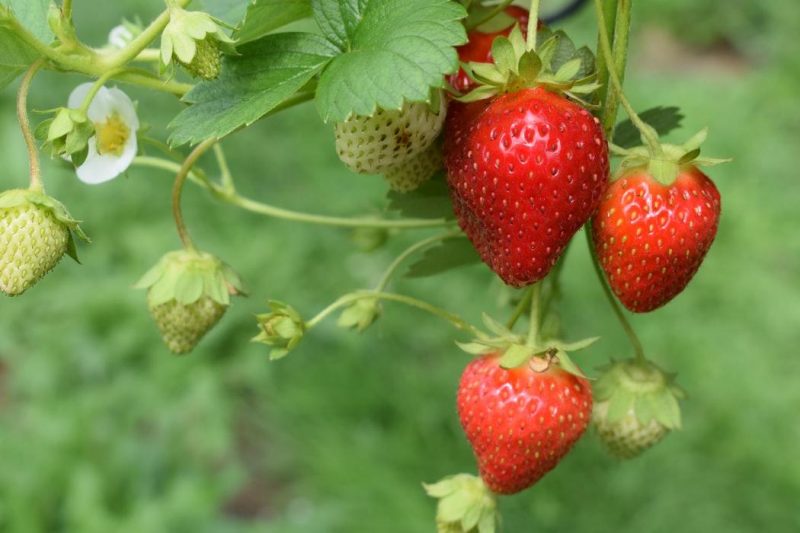
The strawberry or garden strawberry (Fragaria x ananassa) is the first species to offer fresh fruit starting from the second decade of May, opening, along with cherries, the fresh fruit season. Strawberries are eaten fresh, being highly prized for their pleasant taste and specific aroma. They can also be used in cakes, and for syrup, jam, or other products.
Strawberry is a profitable and early species (it bears fruit in the first year after planting). The main problems with strawberry are its high fruit perishability and high harvesting costs. The fruit has a high nutritional value and is recommended for liver diseases, high blood pressure, anemia, asthenia, convalescence, and detoxification. Strawberries are a good source of vitamins (A, D, C, B6, B-12), minerals, and other health benefits.
Botanical characteristics
Strawberry is a perennial herbaceous plant with a short underground stem. It forms a rosette of leaves on the surface and develops a superficial root system into the ground. Strawberry roots grow to a depth of about 30 cm, both horizontally and vertically. From the vegetative buds situated at the base of the plant, it forms stolons, which show pronounced heliotropism (they love the sun), orienting themselves towards the interval between rows that is best illuminated. The flowers are hermaphroditic and remain open for 4-5 days. Each plant forms 40-50 flowers, depending on the variety. The botanical fruit of the strawberry is represented by the achenes placed in the red pulp. The red part that is consumed is the enlarged floral receptacle, which is not considered a botanical fruit.
After 4-5 years, the plants enter the decline period, so the strawberry plantation is viable for only 4 years.
Environmental requirements
The strawberry starts growing at temperatures above 5℃. In winter, plants can withstand temperatures as low as -20℃ or lower. The plant’s resistance to low temperatures depends on both the variety and the degree of snow cover on the plants. Damage caused by negative values (even -3℃) is produced by late spring frosts when the plants are flowering. During the growing season, this species prefers temperatures between 10 and 24℃. Fruit ripening takes place at 14-18℃.
Strawberry plants have a high water consumption, therefore, the best results are obtained in areas where 600-900 mm of rain falls annually. If this level is not reached, irrigation is mandatory.
Strawberry plants have high light requirements, fruiting abundantly when in direct light. However, the plants can tolerate partial shade, but the yield and quality of the fruit decrease. It prefers loose, well-drained soils rich in organic matter. Do not plant strawberries in areas with heavy, clayey, compacted soils.
When irrigated, strawberry exploits sandy soils well, providing early yields.
Soil preparation
When choosing the site, take into account the species’ soil preferences. Considering the need for irrigation to obtain high yields, the land should have a water source nearby. Suitable preceding crops are cereals and leguminous plants, which leave the soil clean and enriched with organic matter.
After removing the plant residues of the preceding crop, apply organic and/or chemical fertilizers (NPK type, the dose varies depending on the soil’s supply of mineral elements).
Recommended products
-
You can find products on a different store
Change Store -
You can find products on a different store
Change Store -
You can find products on a different store
Change Store -
You can find products on a different store
Change Store -
You can find products on a different store
Change Store -
You can find products on a different store
Change Store -
You can find products on a different store
Change Store -
You can find products on a different store
Change Store -
You can find products on a different store
Change Store -
You can find products on a different store
Change Store -
You can find products on a different store
Change Store -
You can find products on a different store
Change Store -
You can find products on a different store
Change Store -
You can find products on a different store
Change Store -
You can find products on a different store
Change Store -
You can find products on a different store
Change Store -
You can find products on a different store
Change Store -
You can find products on a different store
Change Store -
You can find products on a different store
Change Store -
You can find products on a different store
Change Store -
You can find products on a different store
Change Store -
You can find products on a different store
Change Store -
You can find products on a different store
Change Store -
You can find products on a different store
Change Store
For protected crops, you may disinfect the soil with specific products to reduce the incidence of diseases and pests. Disinfection should be carried out 20-30 days before planting, depending on soil temperature.
Recommended products
-
You can find products on a different store
Change Store -
You can find products on a different store
Change Store -
You can find products on a different store
Change Store -
You can find products on a different store
Change Store -
You can find products on a different store
Change Store -
You can find products on a different store
Change Store -
You can find products on a different store
Change Store -
You can find products on a different store
Change Store -
You can find products on a different store
Change Store -
You can find products on a different store
Change Store -
You can find products on a different store
Change Store -
You can find products on a different store
Change Store -
You can find products on a different store
Change Store -
You can find products on a different store
Change Store -
You can find products on a different store
Change Store -
You can find products on a different store
Change Store -
You can find products on a different store
Change Store -
You can find products on a different store
Change Store -
You can find products on a different store
Change Store -
You can find products on a different store
Change Store -
You can find products on a different store
Change Store -
You can find products on a different store
Change Store -
You can find products on a different store
Change Store -
You can find products on a different store
Change Store
The soil should be tilled to a depth of 30 cm, leveled well, and ridged if necessary.
The soil must be well prepared, level, and free of plant debris from the preceding crop. If weeds are present, 5-6 days before planting, you can apply a non-selective herbicide, according to the label instructions.
Recommended products
-
You can find products on a different store
Change Store -
You can find products on a different store
Change Store -
You can find products on a different store
Change Store -
You can find products on a different store
Change Store -
You can find products on a different store
Change Store -
You can find products on a different store
Change Store -
You can find products on a different store
Change Store -
You can find products on a different store
Change Store -
You can find products on a different store
Change Store -
You can find products on a different store
Change Store -
You can find products on a different store
Change Store -
You can find products on a different store
Change Store -
You can find products on a different store
Change Store -
You can find products on a different store
Change Store -
You can find products on a different store
Change Store -
You can find products on a different store
Change Store -
You can find products on a different store
Change Store -
You can find products on a different store
Change Store -
You can find products on a different store
Change Store -
You can find products on a different store
Change Store -
You can find products on a different store
Change Store -
You can find products on a different store
Change Store -
You can find products on a different store
Change Store -
You can find products on a different store
Change Store
If using mulching foil, it can be installed after tillage and after drip irrigation system installation. In this case, you can use machinery that does both jobs at the same time. Straw mulching can be done after planting.
All stages of soil preparation must be completed before September or April, depending on the planting season.
Planting
The strawberry crop starts with freshly harvested and healthy stolons purchased from specialized nurseries. Use refrigerated, disease and pest-free stolons.
As a planting system, you can use 2-row strips, with distances of 80 cm between strips and 35-40 cm between rows. Ensure approximately 30 cm between plants.
For field crop establishment, planting can be done either in autumn (September-October) or spring (April). The stolons can be pruned by removing a large part of the leaves ( leaving 2 young leaves in the rosette) and cutting off the root tips. Also, before planting, the roots can be put in a slurry of yellow soil, cattle manure, and water. This operation will ensure the best possible contact between the roots and the soil.
If planting using a planter, remove only the leaves. The roots must be trimmed when planting.
After planting, the plant’s central bud should be at soil level. For both types of planting, the roots should be positioned vertically, as strawberry is a demanding species in this respect. The soil must be compacted around the plant to ensure the best possible contact between it and the roots.
Provide abundant irrigation immediately after planting, at which time you can also apply a rooting stimulator through the drip system.
After approximately 2 weeks of planting, fill in the gaps with planting material of the same variety.
Maintenance work
Strawberrys can produce many stolons, which leads to plant exhaustion. For this reason, it is recommended to remove stolons periodically, before they compete with the crop plants. Weed control is also a very important work, given the low habitus of the plant. In this regard, weeds can be eliminated by hoeing or by applying specific herbicides.
Recommended products
-
You can find products on a different store
Change Store -
You can find products on a different store
Change Store -
You can find products on a different store
Change Store -
You can find products on a different store
Change Store -
You can find products on a different store
Change Store -
You can find products on a different store
Change Store -
You can find products on a different store
Change Store -
You can find products on a different store
Change Store -
You can find products on a different store
Change Store -
You can find products on a different store
Change Store -
You can find products on a different store
Change Store -
You can find products on a different store
Change Store -
You can find products on a different store
Change Store -
You can find products on a different store
Change Store -
You can find products on a different store
Change Store -
You can find products on a different store
Change Store -
You can find products on a different store
Change Store -
You can find products on a different store
Change Store -
You can find products on a different store
Change Store -
You can find products on a different store
Change Store -
You can find products on a different store
Change Store -
You can find products on a different store
Change Store -
You can find products on a different store
Change Store -
You can find products on a different store
Change Store
If you choose to mulch the crop with foil or straw, the number of maintenance works will be reduced and the plants will benefit from better growing conditions. Mulching maintains a higher and more constant temperature at the root level, prevents water evaporation from the soil, and improves fruit quality.
Strawberry plants must be irrigated to obtain high yields, as strawberries are sensitive to lack of water even for short periods. Drip irrigation systems are the most suitable. Water should be given as often as needed, at all growth and fruiting stages, depending on climatic conditions. Fruit development is the phenophase with the highest water requirements. Sprinkler systems can also be used, but they favor the occurrence of specific diseases.
CAUTION: excessive water in the soil leads to root rot, and root system suffocation, and also favors the appearance of foliar diseases.
The weekly application of water-soluble fertilizers via drip irrigation is an efficient method of fertilization so that the plants constantly benefit from the necessary elements. Depending on the phenotype, you can apply fertilizers with macro and microelements in the required quantities.
Strawberries also react favorably to foliar fertilizer applications.
Recommended products
-
You can find products on a different store
Change Store -
You can find products on a different store
Change Store -
You can find products on a different store
Change Store -
You can find products on a different store
Change Store -
You can find products on a different store
Change Store -
You can find products on a different store
Change Store -
You can find products on a different store
Change Store -
You can find products on a different store
Change Store -
You can find products on a different store
Change Store -
You can find products on a different store
Change Store -
You can find products on a different store
Change Store -
You can find products on a different store
Change Store -
You can find products on a different store
Change Store -
You can find products on a different store
Change Store -
You can find products on a different store
Change Store -
You can find products on a different store
Change Store -
You can find products on a different store
Change Store -
You can find products on a different store
Change Store -
You can find products on a different store
Change Store -
You can find products on a different store
Change Store -
You can find products on a different store
Change Store -
You can find products on a different store
Change Store -
You can find products on a different store
Change Store -
You can find products on a different store
Change Store
To support plants to overcome periods of stress, you can carry out foliar and root fertilization with specific products.
For spring crop establishment, it is advisable to remove the flowers to encourage rooting. Otherwise, the plant allocates resources to fruiting, to the detriment of rooting and leaf development.
Pest control. Among the most common diseases of strawberries, we mention powdery mildew, the common spot of strawberry, black spots, gray mold, and as pests, strawberry-blossom weevil, aphids, thrips, and mites.
Strawberry harvesting
Depending on the variety grown, the harvest season is between May and July. Strawberries should be harvested when the red color has covered the whole fruit. To avoid hours of intense sunlight, harvest in the morning or evening. The operation must be done in stages, with 3 to 8 passes through the same plot. Remove the strawberries from the plant by breaking the stalk. Under normal storage conditions, the strawberries last for a few days, and in controlled-atmosphere warehouses, they can last up to 8 weeks.
Growing strawberry plants in protected areas
By growing strawberries in protected areas, the fruit ripens 25-30 days earlier than in the field. The cultivation technology is similar to that used in the field, with the addition of a few extra operations:
- the stolons must be planted in autumn, in an uncovered solarium, which will be covered after February 15th;
- manage the growing factors and ensure optimum growing and fruiting temperatures; in this regard, use heating or ventilation systems;
- to obtain uniform fruit of appropriate size, it is recommended to ensure pollinators in the protected area (bumblebee hives).














































































































































































































































































































































































































































